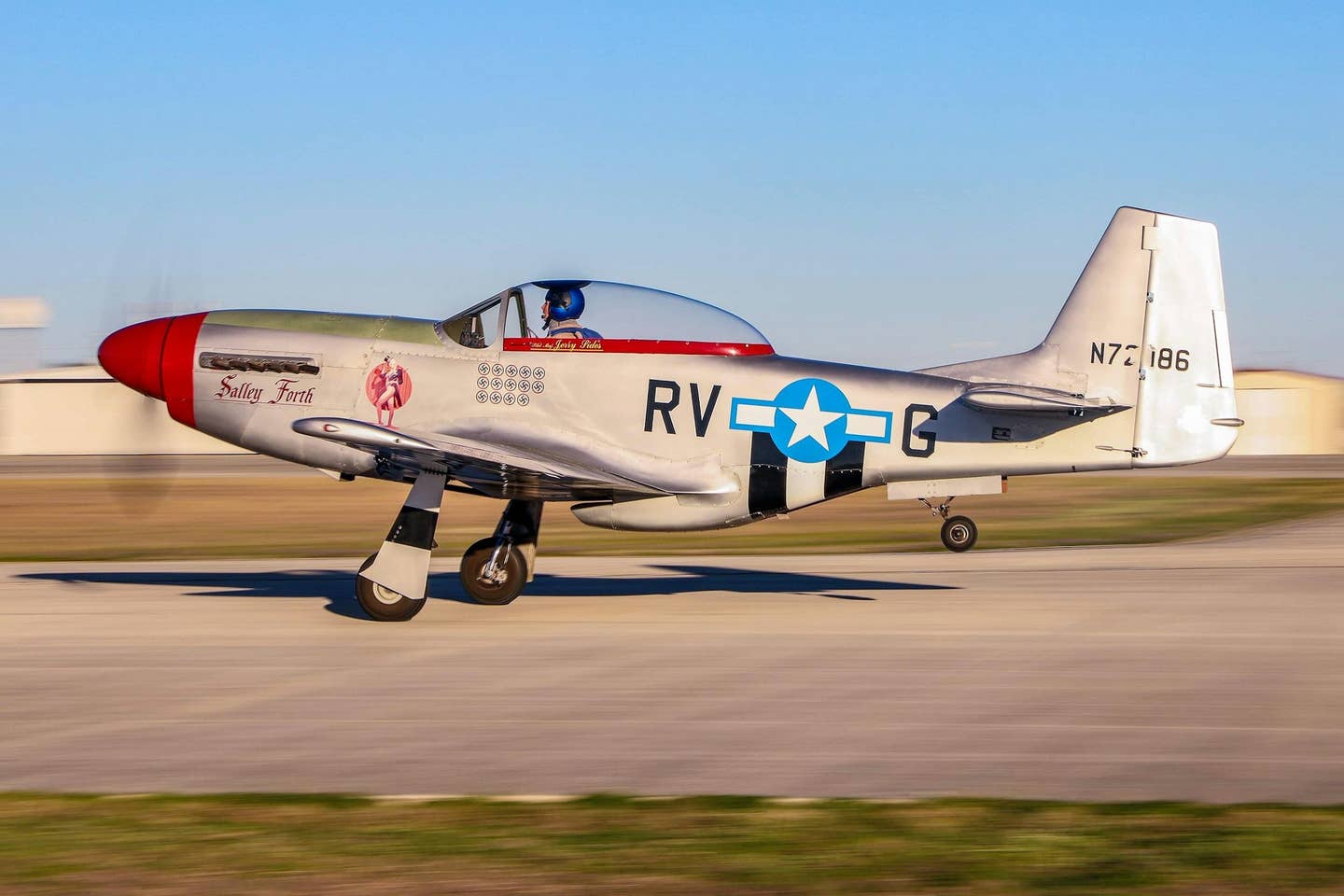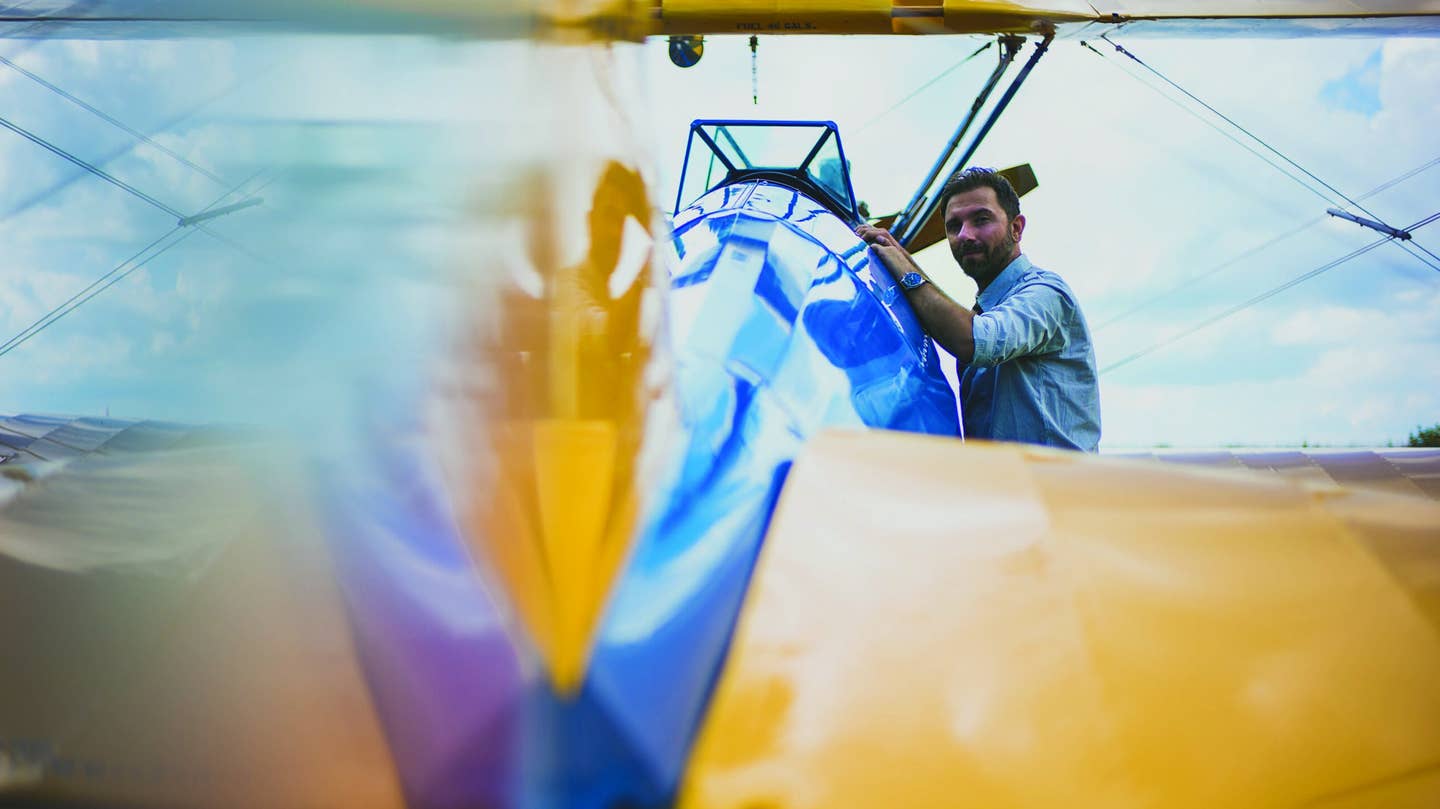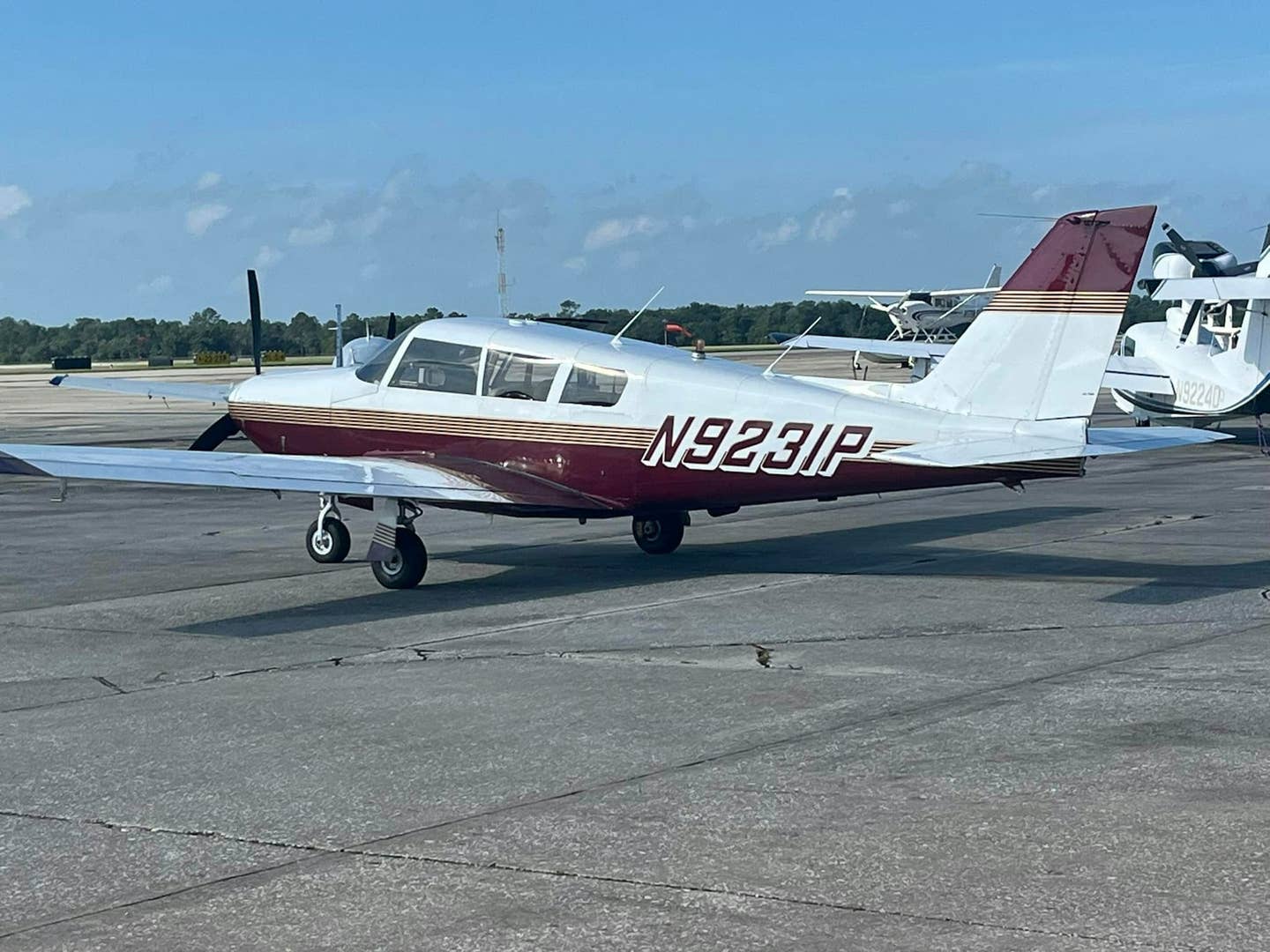
Cessna U206G Stationair 6 II Nigel Moll
Part of my rationale, when I plunked my entire financial nest egg down to buy my 1977 Grumman Cheetah, over 10 years ago, was that I was buying a durable good. An asset that would probably hold or increase its value over time, so that if I ever needed some extra cash, I could sell it for at least what I paid for it. Lately, however, I've lost a bit of that confidence. If worse turned to worst, could I even sell it? With the economy so shaky, is anyone buying airplanes? Especially one that's 10 years older now, and whose only "glass" in the cockpit is on the front of its steam-gauge instruments? I'd heard numerous people say that nobody was interested in airplanes without glass cockpits anymore. And that was before the economy turned sour.
What IS the current state of the union in terms of used aircraft sales? To find out, I interviewed a number of people who work in the used aircraft sales industry and deal with everything from Piper Cub pistons to Bombardier Global Express jets. And while nobody had enormously sunny answers to give me, there were a few encouraging bits of information.
The bottom line, which won't come as a surprise to anyone, is that it's a buyer's market right now. Which is actually terrific, if you have some spare cash in the bank. There are some great deals to be had, in every category of airplane. The flip side to this, of course, is that price is a deal breaker. Sellers in every category are having to lower their prices in order to sell their airplanes.
"It used to be that we'd tell people to price their planes at retail, and negotiate if necessary," says Anna Pangrazzi, of Apex Aircraft Sales, Ltd., a Cessna dealer in Toronto, Canada. "Now, I tell people, if you want to sell your airplane, you need to look at the wholesale price … the bottom of the market, and figure out from there how fast you need to sell your airplane."
"Prices have softened substantially," acknowledged Barron Thomas of Barron Thomas Scottsdale, LLC, a well-known, nationwide used aircraft dealer. In layman's terms, this means that, on average, most piston aircraft are selling for somewhere around a third less, at the moment, than they would have at this time last year. But Thomas, who says this is the eighth recession he's been through in 40 years of selling airplanes, is quick to point out that aircraft owners still have it a lot better than many other people.
"The good news is, airplanes, if they're priced with an 'incentive-ized price,' will sell," Thomas says. "Which makes them a better value than real estate or some other things, right now. The one constant I've found through all [those recessions] is, no matter how bad the economy is, someone, somewhere, is doing something to make money. In the late 1970s, when oil and real estate were down, and prime was 21 percent, guys were still making fortunes developing video games. Those people don't necessarily want a house in Texas. But airplanes are a more fluid commodity. They can go to where the money is."
There's also some good news for some owners who fear that their nonglass airplane is a wallflower nobody wants anymore. "There are three distinct groups of airplane owners, and buyers," Thomas told me, in terms of airplanes other than "collector's" classics and antiques. And, he says, "they don't cross-pollinate a whole lot." Buyers of used airplanes, according to Thomas, can be generally categorized as: Vintage/Heritage types, who buy airplanes built from the late 1950s through the 1980s; Restart Era buyers, who have or buy airplanes built after Cessna began building single-engine pistons again (mid/late 1990s through the early 2000s); and Slightly Used buyers, who want recently produced, used airplanes with glass cockpit technology. And these different groups of buyers have distinct profiles, according to Thomas and others I spoke to.
Thomas described the Slightly Used aircraft buyers as "The 2009 version of the guys in 1968 who arrived at the airport driving a new Thunderbird or Corvette. They're younger, they're in a higher income bracket, they're more highly leveraged, and they want whatever is the latest and the greatest. They tend to be entrepreneurs, but in fields that are more susceptible to the whims of the market." And, Thomas adds, "a glass guy isn't going to go for nonglass, no matter what the price is."
The Restart Era buyers, on the other hand, or those looking for nonglass, recent airplanes, are a little older, and have been around the block a bit more. They still tend to be entrepreneurial, but in more traditional, steady fields, like owning a chain of hardware stores. Value matters more than trendy or cutting-edge capability to these folks. "They're also usually coming up from an airplane that didn't have glass, so even a [Garmin] 430 or 530 in the panel is a step up for them," Thomas says.
Vintage/Heritage owners, by comparison, tend to be employees, not entrepreneurs. Thomas described them as people who "generally have savings and are more cautious with their money. They'd rather have their money in an airplane than the stock market." And if they do lose their jobs, they're more likely to be able to find another job than an entrepreneur who's forced out of business. So ironically, this group is a more stable market, and seems to be weathering the current economic downturn better than the other groups.
John Frank, executive director of the Cessna Pilots Association, says he basically agrees with Thomas' assessment of both the different types of piston aircraft buyers, and the fact that there isn't much crossover among them. However, Frank says he'd add a fourth group to the list. "I have a Cessna turbo 210, because there's nothing being built new, powered by a piston engine, that will perform as well as a 210," he explains. "Some are as fast, but they won't carry the same load. But there are other people, like me, who've held on to planes like the 210 for that reason, who might be motivated to buy a new aircraft, or a newer glass aircraft, because of the other capabilities they offer."
In all categories, however, there's "a lot of money sitting on the sidelines right now," as Steve Champness, national advertising sales executive for Trade-A-Plane, put it. Potential buyers are waiting to see where the bottom of the market is before they buy. So aircraft sales may pick up if it appears prices have stabilized. They're also likely to pick up as the spring/summer flying season gets into full swing.
Another factor that may stimulate aircraft sales is a provision in the American Recovery and Reinvestment Act of 2009 (better known as President Obama's Stimulus Package) that allows buyers of new or used business-use aircraft, or even qualified avionics upgrades for used aircraft, to depreciate a significant portion of the purchase in the first year of use.
The only problem with that benefit is that credit is still extremely hard to obtain. That doesn't affect the sale of older used aircraft as much, because the prices are lower, and chances are better that a buyer can simply write a check for the purchase amount. But in the higher-priced new or Slightly Used aircraft market, the lack of available financing is a huge problem. It's also one of the reasons the jet aircraft market is in much more dire straits than the piston market.
How bad is the jet aircraft market? "Nobody's buying anything right now," summarizes Jay Mesinger, CEO of J. Mesinger Corporate Aircraft Sales and an NBAA board member. "A year ago, or even more recently than that, there would be 30 buyers for one aircraft. Today, we'll have 30 aircraft and be struggling to find one buyer."
Used jet aircraft prices have fallen 50 percent in the last seven months, according to Mesinger. And buyers, even at those prices, are few and far between. Lack of financing is a big piece of that equation. Few people can write a check for 2, 5, or 15 million dollars. "Financing is all but gone," Mesinger says, "and the effect of that on our market is catastrophic. Mix with that sheer business being down, and the intangible of confidence being down, and the 'negative optics' right now of owning and operating a business jet, and it's like a perfect storm."
Used jet sales are still in better shape than new ones, however. Even last September, Mesinger says, jet manufacturers thought they had enough of a backlog to ride out whatever economic storms might come. "Nobody dreamed their entire backlog would be in peril," he says. "But prices have fallen so far that people are realizing they can lose their deposit and buy a used airplane on the open market, get their plane right now, and still get it cheaper than waiting for their new plane." And the only calls Mesinger is getting are from individuals, not corporations. "Corporations just aren't calling right now," he says.
Is there any good news for jets? Well, sort of. First, Mesinger thinks that prices are nearly as low as they will go. "When something has lost 50 percent of its value, there's not another 50 percent to go," he explains. "And unlike a stock, an airplane is a piece of equipment that performs a mission. Even in a down market, it remains a piece of equipment that performs a mission, so it always retains some value."
Furthermore, in both pistons and jets, activity will probably pick up once buyers and sellers stop sitting on the sidelines waiting for a better deal. "Getting sellers' expectations to match market reality is the biggest piece of my work right now," Mesinger says. "It's like a high school dance. When the market starts to go down, buyers begin to pull back, waiting for a better deal, and sellers pull back, not wanting to let go at a lower price. So transactions come to a grinding halt. Nobody wants to be the first ones out on the floor. But soon one or two meet in the middle, and others follow."
And if the credit markets loosen up a little, activity may pick up quite a bit. "In our new 'normal,' " Mesinger says, "you could get into a business jet for $1.5 million that would have been $4 or 5 million a year and a half ago. People are now also willing to buy older aircraft, as opposed to buying something new."
So while the news isn't great, there are clearly some silver streaks, if not full linings, in the storm clouds. For one thing, there are some real bargains to be had, for anyone getting into the market. And the other silver streak to remember is … we've been through worse before, and this, too, shall pass.
"Recessions aren't much fun, but they are a normal part of the business cycle," Thomas says. "This is as severe a recession as the worst ones I remember, but now at least stuff will still sell. I remember, during the Arab oil embargo in the early 1970s, for a month or two, all activity ceased. Then there was 1979, with the even/odd day gas rationing, when all activity ceased again. But, as it always does, [the industry] recovered. Business has to go on, and you can't always do it on the airlines."
In the meantime, Thomas says, airplane owners shouldn't panic. "Just do what makes sense for you at the moment," he says. If you want a better airplane, there are deals right now. If you have to sell, Thomas says, "be a serious seller." Which translates to: be ready to sell for a significantly lower price than you would have last year.
If that sounds like a bitter pill to swallow, Thomas reminds his clients that the reason most people buy airplanes "isn't to make money." They buy them for a specific purpose, or what Thomas calls "soul satisfaction." And especially in today's market, he says with a smile, "an airplane is cheaper than therapy."
What Airplanes Are Still "Hot" … or At Least "Warm"?
It's a buyer's market, in every class of aircraft. But there are still some models that are holding their value better than others. Economy is a big factor in an airplane's desirability at the moment. So twin-engine pistons are currently "very soft," according to Steve Champness, national advertising sales executive for Trade-A-Plane. "You can get a [Beech] Baron for a song right now," he says. "There's a lot of suspicion about what's going to happen to fuel prices. So people are going from twins to high-performance singles, like the Cirrus, Cessna 400 or even Bonanzas."
Single-engine pistons built in the late 1990s and early 2000s that don't have glass cockpits are also struggling. "The problem those aircraft have is that, since they don't have the new technology, they're competing against older aircraft of that same model that perform the same but cost a whole lot less," explains John Frank, executive director of the Cessna Pilots Association.
The toughest sells, according to used aircraft broker Barron Thomas, are aircraft built in the 1950s and early 1960s that don't fit into the true classic/antique category, but are old enough to be running into significant airframe and age issues.
The bestsellers, by contrast, are "aircraft that are one to five years old, of any make," Thomas says. "If they have glass, they have a slight advantage, but those aircraft are a very good value. The other category that's holding its value a little better and selling faster is the real popular Cessnas from the mid-1970s -- the 172s, 182, 210s and 206s." But, Thomas adds, "there's a very loyal following for every kind of airplane. [Cessna] Cardinals have a big following. So do mid-late model Mooneys, and even Grummans."
That trend is enhanced by the fact that buyers today have more information than ever at their fingertips. So, if anything, they tend to be even more specific about what they want. "They do their own research and decide what they want," Thomas says. "So a guy who calls wanting a Mooney only wants a Mooney, and a Bonanza guy only wants a Bonanza."
On the jet side, smaller is better, according to Jay Mesinger, CEO of J. Mesinger Corporate Aircraft Sales. "What's moving better are the small to midsize jets," he says. "[Cessna] CJ1s, 2s and 3s, and Hawker 800s, that kind of aircraft. The market for the larger Gulfstreams, Challengers and Falcons has all but gone away right now." Part of the reason for that is fuel economy, and the "negative optics" of operating a large business jet at the moment. But another piece of the equation is that the drastic plunge in jet aircraft prices is making some of the "entry-level" jets an option for people who, a year ago, couldn't have contemplated buying a personal or business jet.

Sign-up for newsletters & special offers!
Get the latest FLYING stories & special offers delivered directly to your inbox






